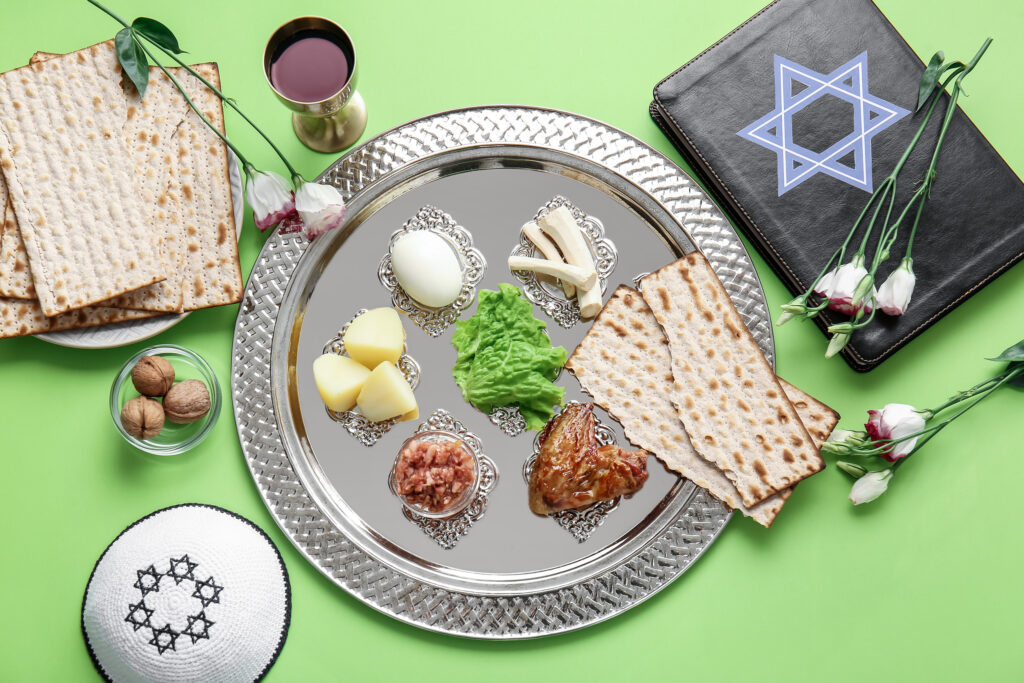If you’ve ever celebrated Passover or been curious about its traditions, you might have noticed that a particular centerpiece holds great significance during the Seder meal. This is the Seder plate, a ceremonial dish that carries six symbolic foods, each representing a unique aspect of the Passover story.
Whether you’re hosting your first Seder or simply want to deepen your understanding, this article will take you through the elements of the Seder plate, their meanings, and how they can shape the experience of this sacred occasion.
For those planning community or family-oriented Seders, kosher catering in Lawrence like Muscat Glatt offers authentic, expertly crafted Jewish cuisine to elevate your Passover celebration.
What is the Passover Seder Plate?
The Seder plate is the focal point of the Passover dinner, representing the story of the Israelites’ exodus from Egypt. Six specific items are arranged on the plate, each holding deep spiritual and historical meanings. The aim is to interact with these symbols during the Seder, making the story of liberation come alive for everyone around the table.
The Six Symbols of the Seder Plate
1. Maror (Bitter Herbs)
Maror is typically represented by horseradish or romaine lettuce, symbolizing the bitterness of slavery in Egypt. Eating Maror during the Seder reminds participants of the suffering endured by the Israelites and the importance of appreciating freedom.
2. Charoset
This sweet mixture of fruits, nuts, wine, and spices symbolizes the mortar used by enslaved Israelites to build structures for Pharaoh. Its sweet taste acts as a counterbalance to the bitterness of Maror, reminding us of the hope that sustains people, even during hardship.
3. Karpas (Vegetable)
Karpas, often parsley or celery, is dipped in saltwater during the Seder. The saltwater represents tears shed by the Israelites in bondage, while the green vegetable symbolizes renewal and hope for the future.
4. Z’roa (Shank Bone)
The shank bone represents the Pesach (Passover) sacrifice, a lamb offered at the Temple and eaten as part of the ancient Seder meal. While the bone is not consumed in modern practice, it serves as a reminder of the Temple sacrifices and their lasting significance.
5. Beitzah (Egg)
The egg symbolizes mourning over the destruction of the Second Temple, as well as the cycle of life and renewal. Like the Z’roa, the egg is traditionally not eaten, although some families may choose to incorporate hard-boiled eggs into their meal.
6. Chazeret (Additional Bitter Herb)
Chazeret, often romaine lettuce, is used as an additional bitter herb to further emphasize the hardships endured by the Israelites. Not everyone includes Chazeret, but it highlights the importance of reflecting on the bitterness of slavery.
Enhancing Your Seder Experience with Authentic Catering
Hosting or planning a Seder meal can feel overwhelming, but the right support can make all the difference. For families in New York, kosher catering in Lawrence like Muscat Glatt takes the stress out of preparation while maintaining the authenticity and spirit of the occasion.
Muscat Glatt offers expertly crafted dishes that meet the highest kosher standards. With their flavorful menu, you can have peace of mind knowing every detail has been handled with care, allowing you to focus on the traditions of the Seder.
A Tradition of Togetherness
The Passover Seder plate is more than a collection of symbolic foods; it’s a gateway to an immersive storytelling experience. By engaging with the symbols on the plate, families are reminded of the strength of resilience, the value of community, and the blessings of freedom.

